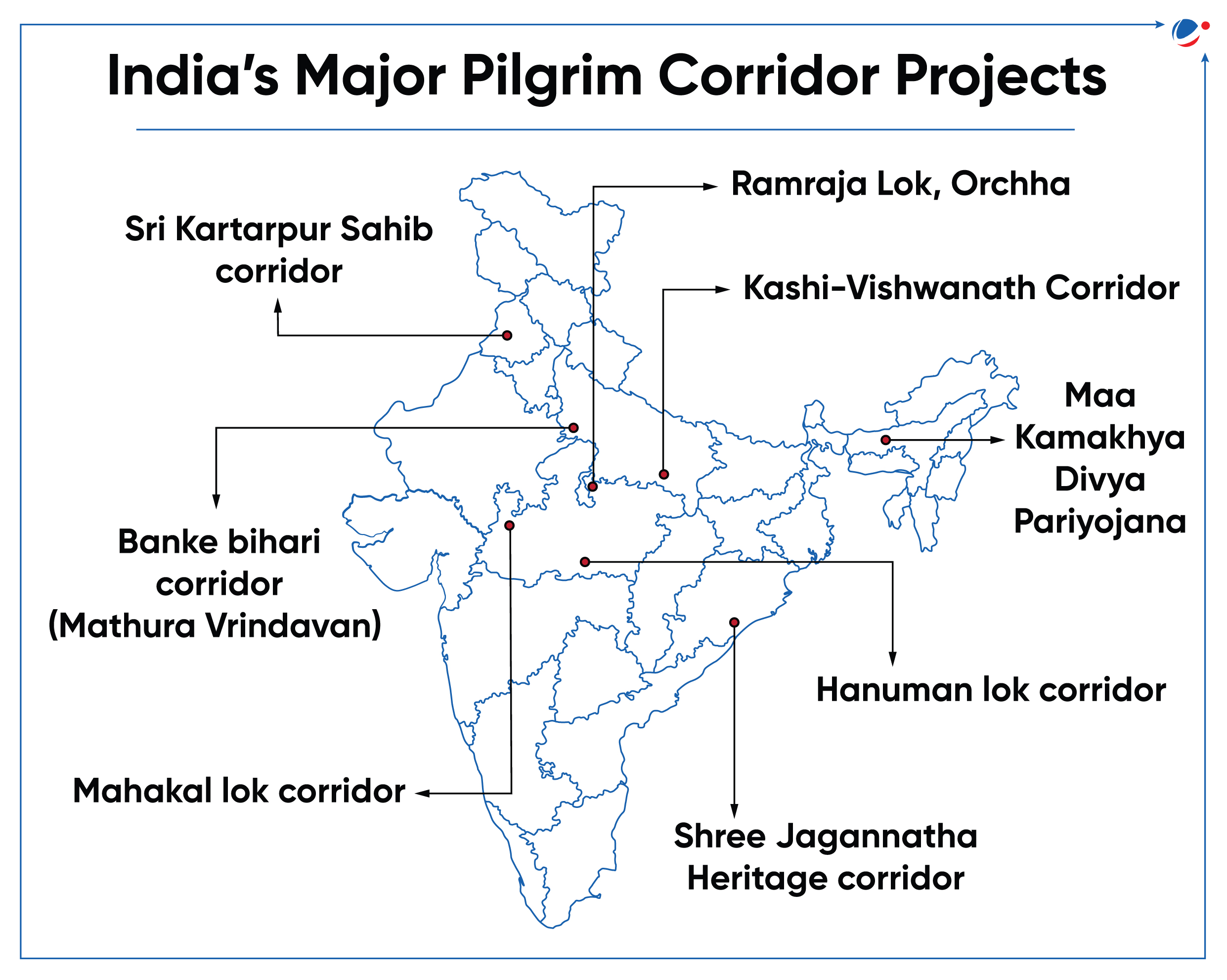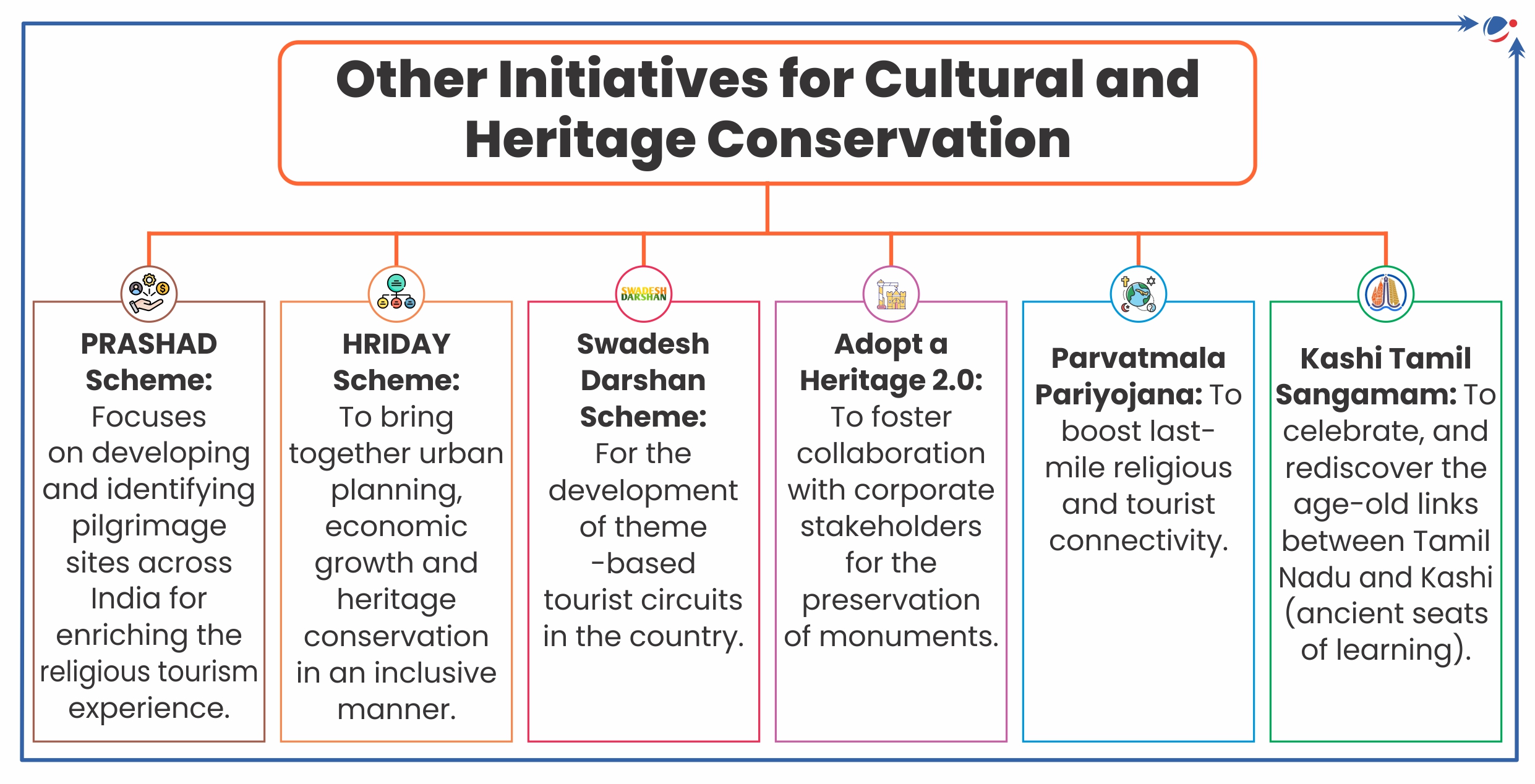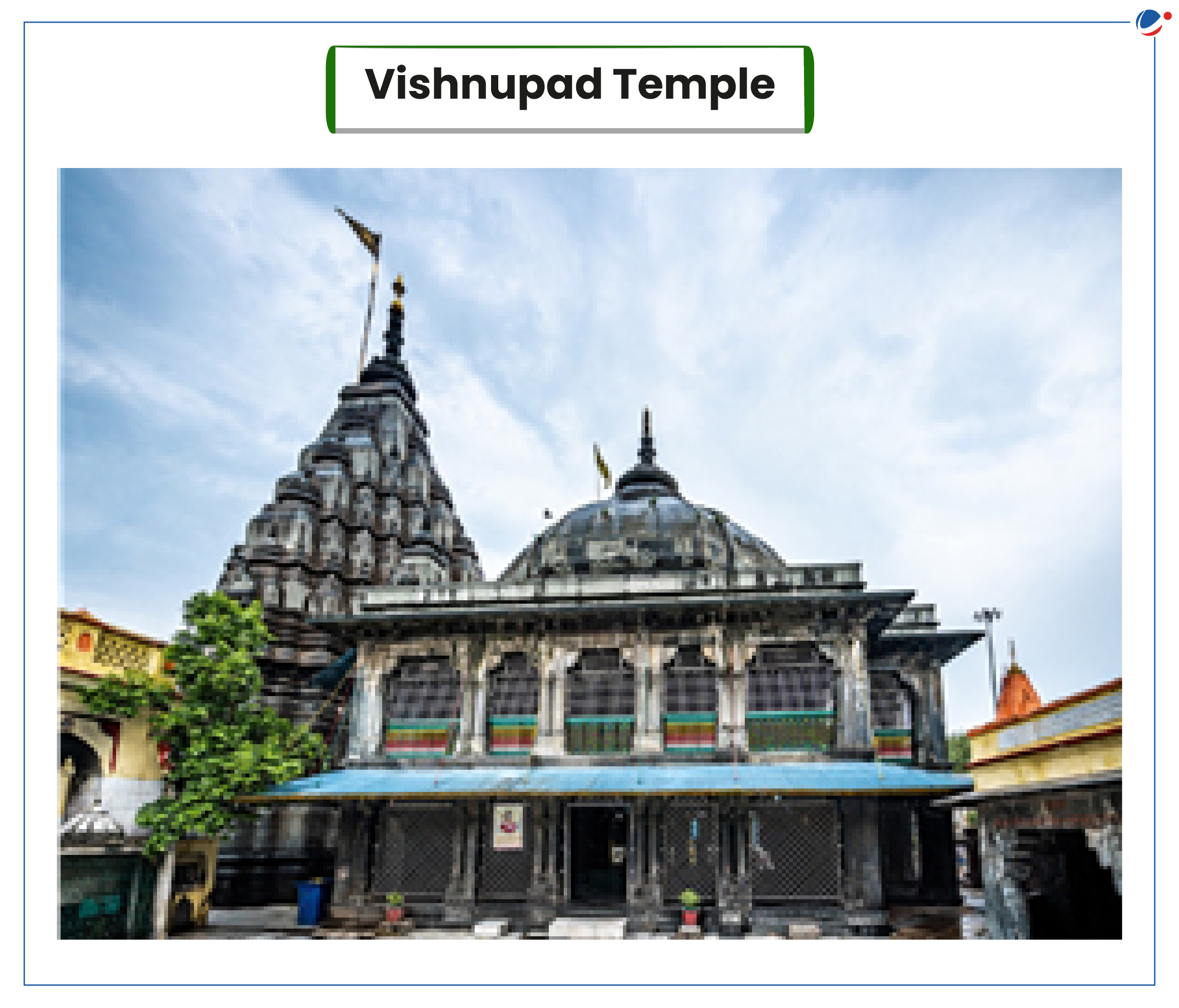Why in the News?
Union Budget 2024-25 announced that corridor projects will be built for the Vishnupad Temple at Gaya and the Mahabodhi Temple at Bodh Gaya in Bihar.
More on the News
- The Vishnupad and Mahabodhi Temples are located about 10 km apart (refer to the box at the end).
- The newly announced corridor project is inspired by the Kashi Vishwanath Temple Corridor in Varanasi (Uttar Pradesh).
- The foundation stone for the corridor, now also known as Shri Kashi Vishwanath Dham, was laid down in 2019.
- It was conceptualised as a project to create an easily accessible pathway to connect Shri Kashi Vishwanath Temple to the banks of the river Ganga.
About Pilgrim Corridor Projects
These Corridor Projects are large-scale infrastructure developments designed to renovate and restore religious sites while also connecting nearby religious places. In recent years, India has announced several pilgrim corridors projects (refer to the map) aimed at transforming these pilgrim places into world-class pilgrimage and tourist destinations.

Some of the key features of these projects are:
- Preservation and Restoration: For example, the Kashi Vishwanath Corridor expanded the area around the temple and restored smaller temples including Sheetla Mata Temple, Shri Ram Temple, and Shri Gangeshwar Mahadev Temple among others.
- Amalgamation of Development and Heritage: For example, Mahakal Lok Corridor, which is flanked by two majestic gateways named Nandi Dwar and Pinaki Dwar, features murals depicting stories from the 'Shiv Puran'.
- Enhanced Visitor Experience: Decongestion of religious places, virtual museum of the ancient temples, restrooms, shops, information centers, crowd management facilities, enhanced accessibility of religious places (escalators and ramps), etc. being under taken in various pilgrim corridor projects.
- Boost to Tourism and the Economy: India earned over ₹2.3 lakh crore in foreign exchange from tourism, a 65.7% increase year-on-year (Economic Survey 2023-24).
- Pilgrim corridor projects will give significant boost to religious tourism and lead to generate additional employment and ancillary activities.
Challenges Associated with Pilgrim Corridor Development Projects
- Rehabilitation Issues: For example, more than 17 acres of land, encompassing five villages, had to be acquired for the implementation of the Jagannath Heritage Corridor project.
- Demolition of Neighbouring Old Structures: For example, concerns related to the demolition of smaller but ancient temples were raised during the Kashi Vishwanath Corridor project.
- Sustainability Concerns: Large-scale construction can have negative effects on the local environment, including pollution, deforestation, and disruption of natural water bodies.
- Also, large-scale tourism may see a rise in the carbon footprints of these places.

Way Ahead
- Heritage Impact Assessments: These would help address adverse impacts on neighbouring ancient structures, rituals related to them and communities associated with them.
- Community Participation: Involving the local community in planning ensures their interests are considered, reducing potential conflicts and easing land acquisition.
- Sustainable Tourism: These corridor projects should align with 'Travel for LiFE', a program under Mission LiFE.
- Travel for LiFE has been envisaged to create awareness about sustainable tourism and to nudge the tourists and tourism businesses to adopt sustainable practices synchronous with nature.
 About Vishnupad Temple
 Mahabodhi Temple Complex

|



